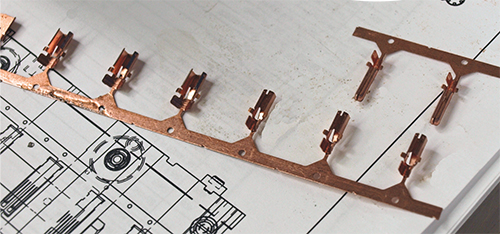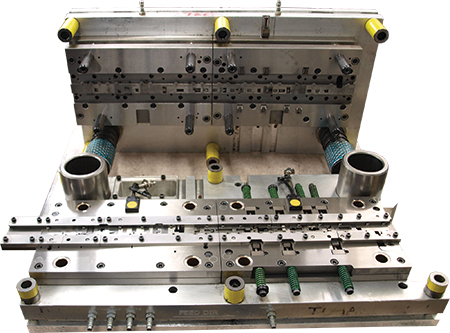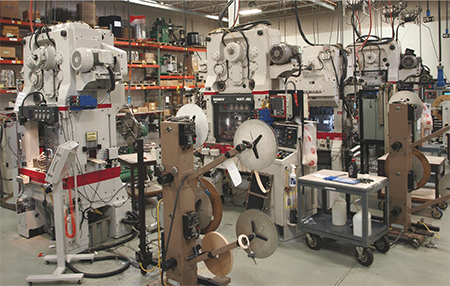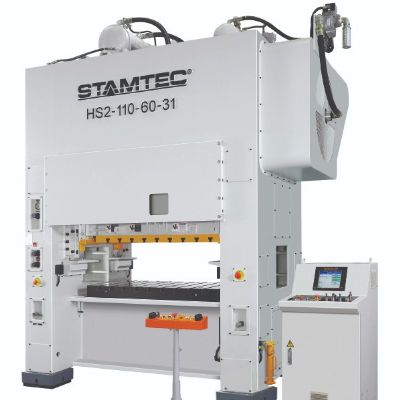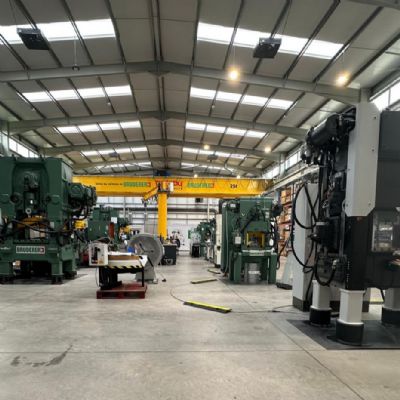Stamping Millions of Miniature Parts
November 1, 2015Comments
...via high-speed link-motion presses is the forte of Minneapolis-area metalformer Meier Tool & Engineering. The unique link-motion presses provide three distinct benefits: improved dimensional tolerances, reliable slug removal and increased die-component life.
“We were stamping tiny formed parts that were post-heattreated,” he says, “and after heattreating the residual stresses in the formed parts often caused bend angles to move out of tolerance. We simply were unable to make the parts to our customer’s satisfaction. When we brought in the link-motion Yamada Dobby press, its 11-deg. dwell at bottom sufficiently allowed the release of those residual stresses so that we were able to maintain dimensional tolerances after heattreating.”
Meier processes metal strip from ¼ to 3 in. wide, with its sweet spot somewhere around 1 in. Material thickness ranges from 0.002 to 0.125 in., with a sweet spot around 0.006-0.007 in.
Conversions
The healthy market for disposable surgical instruments and implantable devices has nourished Meier’s expanding waistline—medical work now comprises nearly 70 percent of its diet, up from 45 percent just 5 years ago. One trend the company has leveraged: OEMs seeking to convert machined and metal-injection-molded (MIM) parts into stampings, where significant cost savings can be realized.
“We built this business,” says operations manager Jon Preston, “on that very capability. Our sales force is skilled and trained to look for potential conversion opportunities, and we also focus on educating customers to identify parts that might be ripe for conversion to metal stamping.”
More PM Tool Steels, and Adjustable Tooling
Among efforts to improve its die-making capabilities, and develop more reliable and consistent dies, is growing use of PM tool steels (Bohler Uddeholm is the supplier of choice). It also strives to develop new dies with adjustable tool sections. “This allows our press technicians (Meier calls its press operators technicians, since they’re responsible for their processes from start to finish) to dial in the process at the press. This proves much more efficient than having to remove tools from the press for adjustments and alterations.”
Such adjustments seem to become more necessary as the influx of new, challenging workpiece materials increases. We’re talking exotic metal alloys such as platinum and tantalum, as well as the shape-memory alloy (SMA) nitinol—a nickel-titanium alloy finding increased use in medical implantables such as stents, orthodontic-bracket clips and vascular closures. Meier forms nitinol in heated dies at process temperatures exceeding 800 F.
Another relatively new material gaining popularity is MP35N (tensile strength to 300 ksi), a Ni-Co-Cr-Mo stainless-steel grade from Carpenter. It, according to Carpenter, provides good ductility and toughness and corrosion resistance, as well as resistance to high-temperature oxidation and hydrogen embrittlement.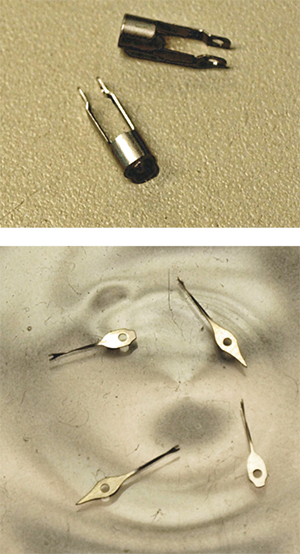
“Working with challenging materials like nitinol and MP35N keeps us focused on continuous improvement and developing new tooling concepts,” says Preston. “And in addition to new-process and die development, we’re also keeping an eye out for ways to improve the productivity of existing dies. One of our key performance indicators is die life and hits between maintenance cycles. Our goal is to complete at least one die-enhancement project per month, to increase tool life. And, we closely track the cost savings from each project implemented, in some cases offering savings back to our customers.”
Prototyping a Key Value-Add Proposition
As parts get smaller and smaller and the geometry challenges increase, prototype development becomes more critical to landing new jobs, and new customers. Among the value-added opportunities at Meier Tool & Engineering, therefore, prototype development rates at the top. Signifying its importance, the firm completed a significant week-long kaizen event focused on its prototype department.
“We created a kaizen team of nine staff members to survey the entire prototype process,” says VanDanacker. “In the end, we redeployed several pieces of manufacturing equipment, moving them from the production floor to create a separate room dedicated to prototyping. Now we develop prototypes in a cellular environment using dedicated equipment—wire EDM, mills, grinders, presses, etc.—as well as a dedicated CAD/CAM station and programmer and an estimator.”
The end result of the new, focused prototype factory at Meier is quicker flow, from estimating to finished parts. “Feedback throughout the development process amongst the team—designers, estimators, machinists, etc. —is immediate,” adds VanDanacker. “We’re much more responsive to customer requests, more agile when design changes come in, and throughput has increased as well. We can, in some cases, turn projects that might have taken days to complete before in a matter of hours now.” MF
View Glossary of Metalforming Terms
See also: Yamada Dobby America
Technologies: Stamping Presses, Tooling






